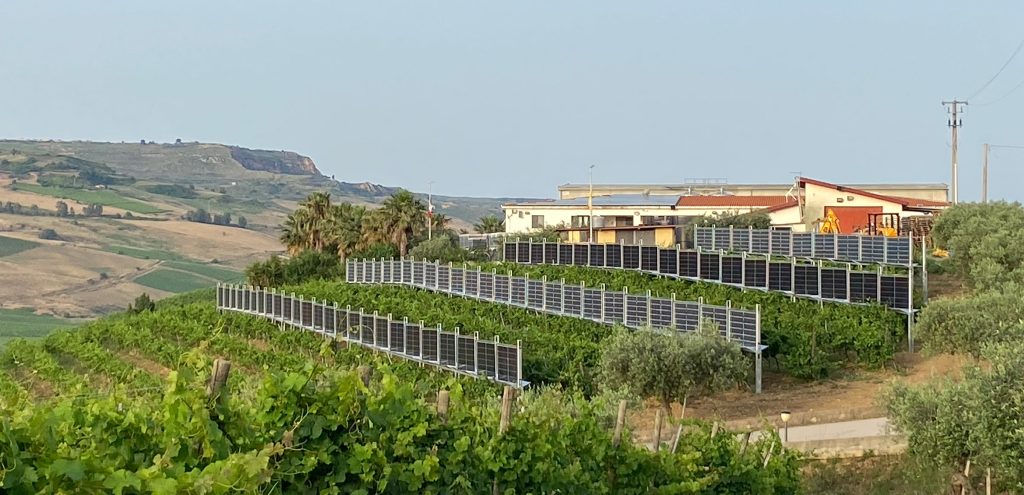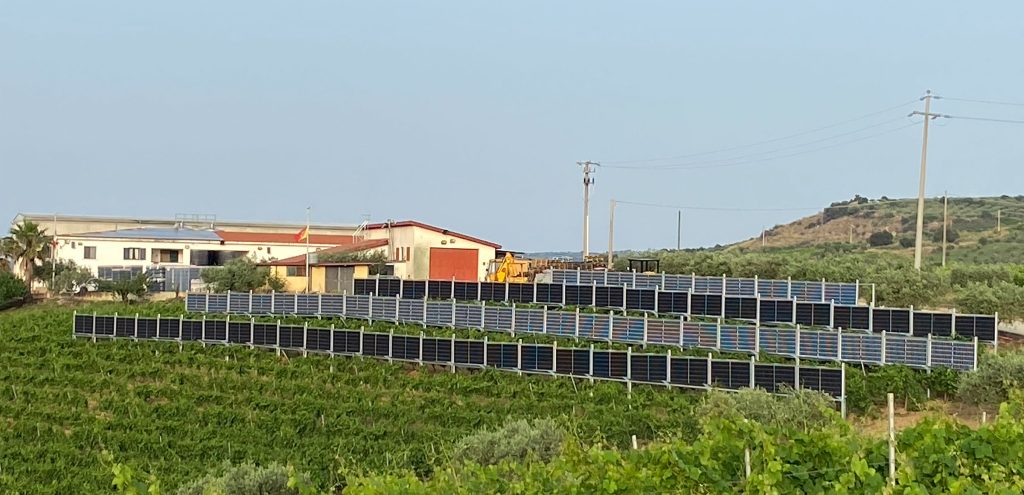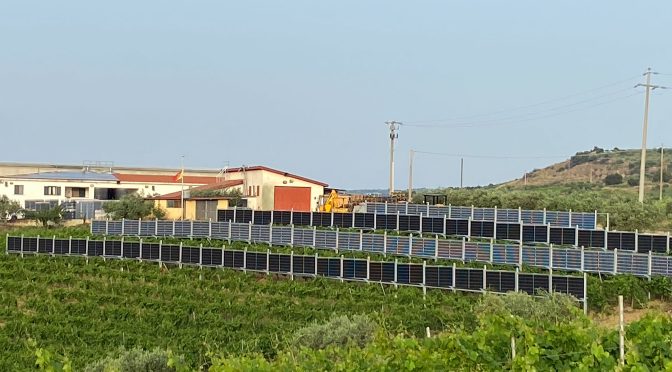In Salaparuta, the Cantine Vaccaro vineyard lives in perfect harmony with photovoltaic panels. The installation is part of the “Agrivoltaico Open Labs” initiative, a series of open-air innovation laboratories where we test the integration of solar energy production, agriculture and biodiversity protection.
What does good wine have to do with renewable electricity? The answer is a lot, and this is thanks to the Sun. Indeed, its light and heat play a key role in the life cycle of the vineyard and the ripening of grapes. The Sun’s rays contribute to chlorophyll photosynthesis by making plants grow, while at the same time they are a key resource for generating electricity, thanks to photovoltaic panels that can capture solar energy.
Agrivoltaic wine
Good wine and renewable electricity, then. This winning combination can be found at Salaparuta, Sicily, a small town in the province of Trapani. It’s located in the Belice Valley, a place that has traditionally produced wine, and where vineyards stretch over the hills. And here we have set up one of our five “Agrivoltaico Open Labs”, a series of open-air laboratories that can be found in various parts of Italy. Together, with different scientific partners, research institutions, start-ups and farms, we are working on the integration between solar energy production, agriculture, and biodiversity protection.
Thus, thanks to photovoltaic panels, the company doesn’t only produce grapes that are destined to become wine, but also energy, thereby reducing costs while at the same time promoting sustainability.
Technology first
The demonstration agrivoltaic system, which has a maximum power output of 44kWp (kilowatt peak), features technology that was developed by the Italian start-up Sentnet with vertically arranged double-sided photovoltaic modules.
The modules thus have a minimal footprint and are positioned so as not to create shading for the parallel rows of panels.

This type of technology enables excellent integration with agricultural activities, with a 90% increase in the cultivable area due to the reduced footprint of the photovoltaic panels, compared to conventional technologies.
As was the case at the vertical installation at Colfiorito (in another Italian region, Umbria), we have adopted Sentnet’s patented rainwater harvesting system, which is integrated with the photovoltaic installation. In this way, rain is collected in drains under the panels and then fed into collection tanks. From there, the water can be reused for irrigating crops. Cleaning and maintenance, on the other hand, are made easier by the vertical position of the panels. Furthermore, the Salaparuta plant has a smart network of sensors that monitor both energy and agricultural production, as well as a range of environmental and agricultural parameters, weather conditions, soil moisture and temperature.

The sensors were installed in two areas: the so-called “control” area, which isn’t shaded by the modules, and a test area placed between the rows to study any differences and benefits related to the presence of the installation.
Miriam Di Blasi, head of Enviroment & Impacts Mitigation Innovation at Enel Green Power, says: “The Open Labs are a practical example of open innovation, enabling us to work together with local communities while promoting a solid and collaborative scientific approach with farms, beekeepers, universities, research centers and start-ups with specific expertise in these areas. We are also working with schools and other local entities in activities that promote training and help spread the word. After the first four Agrivoltaic Open Labs, which were launched in Italy in 2023, we plan to inaugurate the fifth and final lab by the end of this year.”


